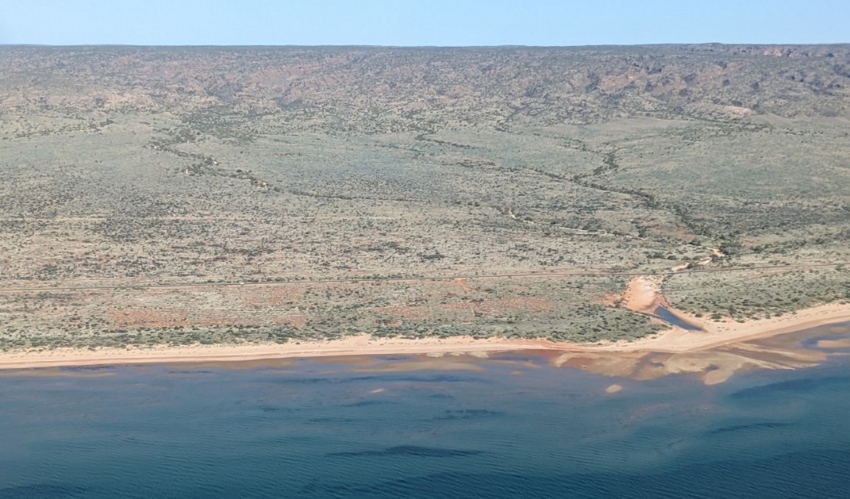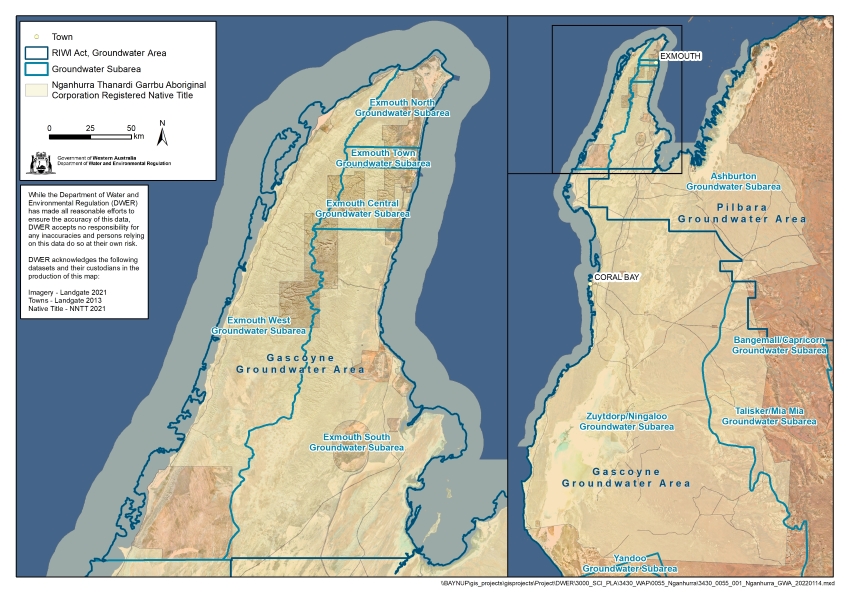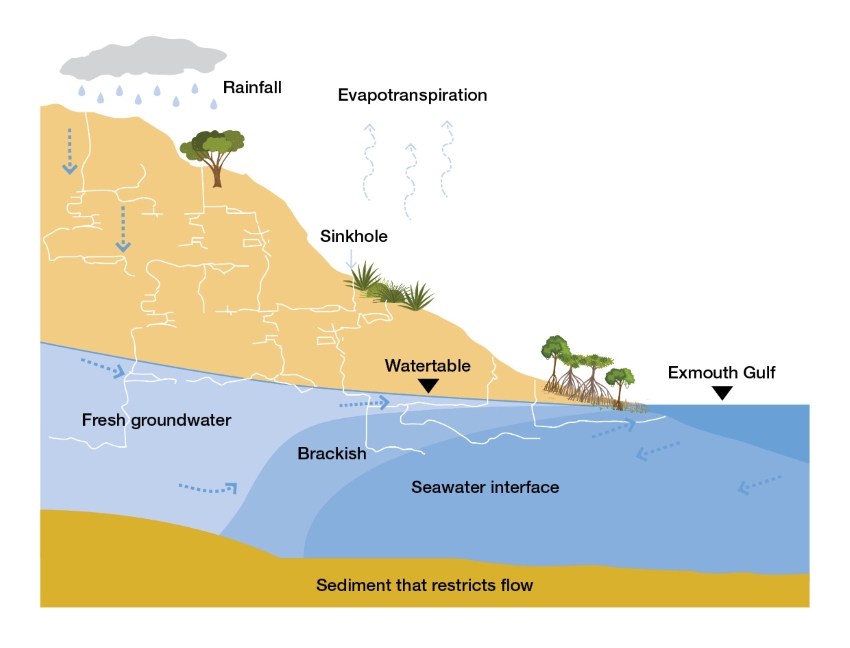The department recognises and acknowledges the Traditional Owners and custodians of the Exmouth Gulf and its surrounds, the Baiyungu, Yinikurtira and Thalanyji people. We recognise their deep and continuing connection to the land and waters of this region, and we pay respect to Elders past, present and emerging.
Plan release information
The Exmouth groundwater subarea allocation plan was released in 1999 by the former Water and Rivers Commission. The plan outlines water allocation limits (how much water can be taken out of a resource for use), local water licensing policies, and monitoring programs that will apply in the plan area.
The plan sets water allocation limits for five groundwater subareas. Allocation limits manage water abstraction at a subarea or resource scale, while water licensing and monitoring requirements manage abstraction at a local scale.
We set the allocation limits to manage how much water can be sustainably taken. This is influenced by the amount of groundwater needed to support water-dependent values. In Exmouth, terrestrial values include the cave systems and unique stygofauna of the Cape Range subterranean waterways, and places like Camerons Cave and Qualing Pool. There are near-shore marine ecosystem values including areas of mangrove and seagrass in shallow coastal waters.
Exmouth water allocation planning activities
In 2022, the Exmouth Gulf Taskforce (taskforce) was established by the Minister for Environment as an advisory body to provide recommendations on the conservation and enhancement of the key values of Exmouth Gulf and its surrounds. The taskforce is supported by our department.
Protection of the Cape Range subterranean waterways, and the groundwater-dependent ecological, cultural and social values, is a key interest of the taskforce and the Nganhurra Thanardi Garrbu Aboriginal Corporation (NTGAC). The NTGAC represents the Traditional Owners and custodians of the Exmouth Gulf and surrounds.
We have been reviewing groundwater allocation limits across the Exmouth peninsula in consultation with the taskforce, Water Corporation and NTGAC. See our November 2024 update on the Exmouth groundwater allocation limits review.
Plan area
The Exmouth plan area is about 1,260 kilometres north of Perth covers 2,020 km2 of the North West Cape, on the western side of the Exmouth Gulf (see map below). It includes the Cape Range National Park, which is part of the Ningaloo Coast World Heritage Area.
The climate of the Exmouth Peninsula is semi-arid, with hot summers and milder winters. Rainfall in Exmouth has a high natural variability, both monthly and year-to-year. The big rain events are brought both by tropical cyclones from the north and low-pressure systems extending from the south between January and July. The infrequent nature of these events means that there may be several consecutive years where rainfall is low.
For management purposes, the area is divided into five groundwater subareas in the proclaimed Gascoyne Groundwater Area (see map):
- Exmouth North
- Exmouth Town
- Exmouth Central
- Exmouth West
- Exmouth South.
Groundwater resources
Groundwater from the karstic Cape Range limestone aquifer is the major freshwater resource in the Exmouth plan area. It is used to supply the town with drinking water and water for public amenities, domestic garden bores, tourism, defence, aquaculture and industrial uses.
The aquifer is a lens of fresh groundwater overlying saltwater in the Cape Range limestone formation (see conceptual cross-section below). The aquifer and the Cape Range subterranean waterways support unique and important values such as a rich diversity of stygofauna and troglofauna.
The Cape Range subterranean waterways are listed in the Directory of Important Wetlands in Australia. The Cape Range Remipede Community at Bundera sinkhole and the Camerons Cave Troglobitic Community in the Exmouth townsite are threatened ecological communities recognised and protected under the Western Australian Biodiversity Conservation Act 2016.
The high diversity of subterranean species also contributes to the Ningaloo Coast World Heritage listing, meeting the UNESCO criterion x:
to contain the most important and significant natural habitats for in-situ conservation of biological diversity, including those containing threatened species of outstanding universal value from the point of view of science or conservation.
The deeper, confined Birdrong Sandstone aquifer is found at depths of about 1,000 metres and contains saline water. The Birdrong Sandstone aquifer is managed under the Carnarvon Artesian Basin water management plan.





